The arrival of the Kia Carnival has undoubtedly changed the rules of the Indian people-mover game. With just ₹1.3 lakh separating the two cars, this battle is definitely a lot closer than we may have expected.
India – a land of a billion people, and the biggest democracy in the world. Over the past two decades, we’ve all heard this phrase – or something similar. And, frankly, it sounds bombastic – celebratory even. And this has me confused – are we supposed to celebrate the fact that we’re an overpopulated country, or be alarmed?
Despite various overpopulation issues, such as unprecedented levels of pollution and scarcity of resources, we don’t seem to be in the mood to ease off the gas pedal of population growth. As of 2019, the United Nations Population Fund recorded India’s annual population growth at an average of 1.2% between 2010 and 2019. That’s more than twice the annual growth rate of China in the same decade!
Now, Indians do have strong family values that undoubtedly help form solid support structures. It’s this bond that keeps big families close and, in many cases, living under the same roof. So, had it not been for India’s per capita income limitations, I really think that the Indian automotive market would’ve been dominated by the MPV / MUV rather than the hatchback. Sure, SUVs are riding the demand curve right now, but even they have been trying to bring in seven-seat functionality for some time. The Mahindra Scorpio and XUV500 have been available as seven-seaters right from the beginning, and Hyundai is working on a seven-seater Creta. All these cars have sold in good numbers. So, just imagine the Creta’s potential with a seven-seat option – which is due soon!
The undisputed 7-seat champion
When it comes to seven-seaters in India, though, there’s been one car that’s been an outright success right from the day it was launched – I am, of course, referring to the Toyota Innova. With its practical cabin, solid build quality, low running costs, and bulletproof reliability, the Innova has won the hearts and minds of Indians as the undisputed leader of the family car segment.
Many cars have tried to replicate the success of the Toyota Innova – from the Mahindra Xylo, which was more of a miss than a hit, to the plush, but equally (if not even more) unsuccessful, Tata Aria. Toyota, in fact, has been the definitive carmaker in the MUV segment in India, right from the days of the Toyota Qualis. Sure, the Tata Sumo gave the Qualis a run for its money back in the day, but when the Qualis made way for the Innova, there was simply no looking back. The only other MPV to perform really well ever since its launch is the Maruti Suzuki Ertiga, although, it’s never been able to touch the Innova in terms of quality or brand value.
The Innova’s incredible success led to an unusual problem for its customers. You see, every Innova customer looking for an upgrade had really nowhere to go. So, they ended up being repeat customers, buying the face-lifted version of the previous generation Innova and then upgraded to the Crysta.
So, as I pointed out in February 2019 in our Mega MUV test, the Kia Carnival really is the perfect upgrade for Innova Crysta customers. Although, at that time, there was one crucial element missing from the certainty of the aforementioned statement – the Carnival’s price tag! To be honest, a year ago, we only had an indication that the Carnival would make it to India – Kia was still considering the market prospects for the car here.
Fast forward to 2020, and the missing element is finally at hand – the Carnival is priced from ₹24.95 to 33.95 lakh (ex-showroom, Delhi). So, to make this comparison as fair as possible, we roped in the top-of-the-line Innova Crysta in diesel automatic spec, which is priced at ₹23.63 lakh (ex-showroom). So, with a difference of ₹1.32 lakh between the two, any Innova Crysta customer looking to upgrade has just found the perfect car in the Carnival.
Now, before we proceed with the comparison, let me say that this particular comparison isn’t entirely fair in terms of what lies under the bonnet. The Innova we have here is a 2.8-litre BS4 model that’s no longer on sale, but since Toyota India doesn’t have a test car with the new 2.4-litre BS6 diesel engine just yet, we had no other option but to make do with this BS4 model. Plus, the 2.4-litre is only 25bhp shy of the 2.8-litre unit but has the exact same torque output. Now, in terms of the really important stuff, like space and comfort, this Crysta is exactly the same as the BS6 model.
So, let’s begin with the comparison, shall we?
A worthy rival, at long last
After having thwarted rivals like the Xylo and Mahindra Marazzo, the Toyota Innova, had it been a person, might have been a bit bored of its own undisputed dominance. After all, what’s life without a good challenge? And while that’s true, you also have to ‘be careful what you wish for’ – for you might actually get it. And, for the Innova, that certainly seems to be the case.
Honestly, when I first got my hands on the Carnival back in 2018, I really thought it would be considerably more expensive than the Innova. But Kia is very serious about establishing its roots in India, so, with the Carnival being locally manufactured in India, Kia has been able to offer it at a competitive price tag.
Pound-for-Pound
Most base models in India are grossly under-equipped – you still get wind-down windows in base variants of premium hatchbacks to this day. In a similar vein, the base model of the Innova Crysta diesel doesn’t get a stereo, despite being priced at ₹16.44 lakh (ex-showroom).
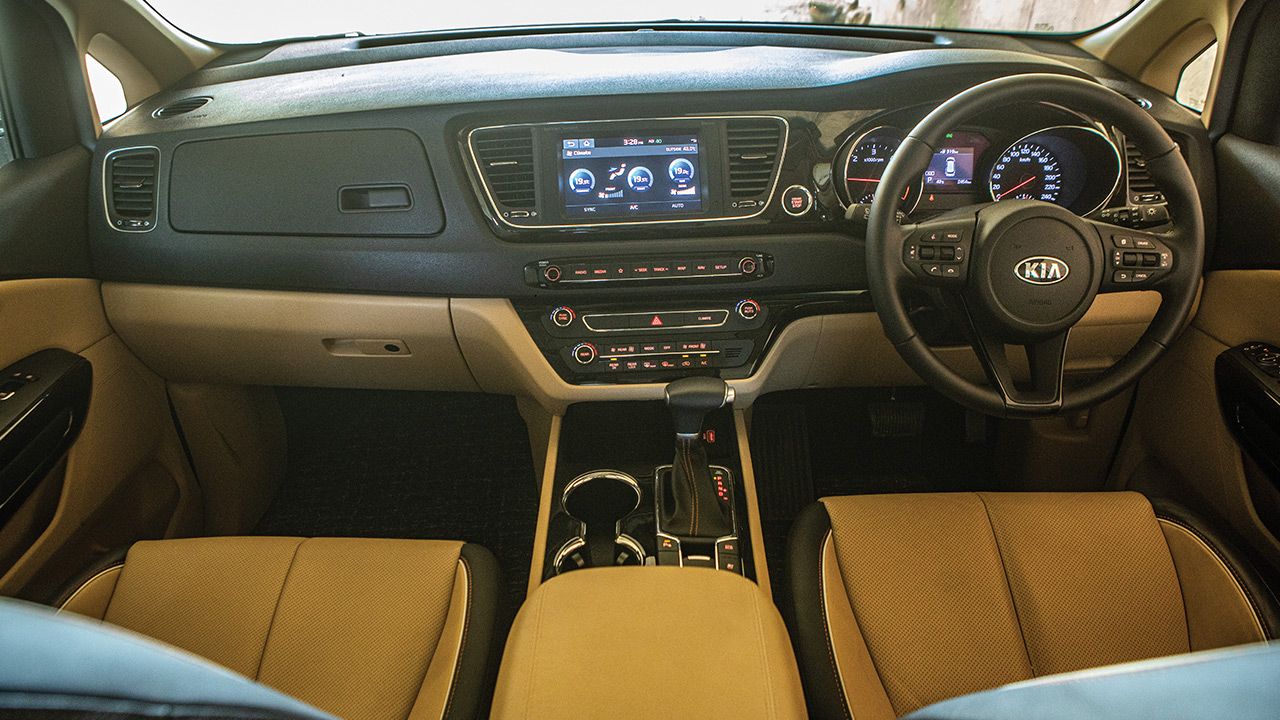
The Carnival, though, has a different story to tell. The entry-level model comes with keyless start/stop, electric sliding rear doors, automatic headlamps, three-zone climate control, an eight-inch infotainment system, with Apple CarPlay and Android Auto, and an automatic gearbox as standard. So, buying an entry-level Carnival won’t leave you short-changed in any way, should you choose to buy one instead of a top-of-the-line Crysta – the Carnival most certainly offers better value, pound-for-pound.
Make way for the 9-seater
By paying ₹1.32 lakh more, you get the added benefit of a much larger family car, with considerably more space for second and third-row occupants (refer to Seat Space Chart), along with more comfortable seats. And should you choose to go for the mid-level Prestige variant, you can even have a 9-seater version, with a fourth row of seats!
The Carnival that we had on test was the top-end 7-seater Limousine variant, featuring LED projector headlamps, side and curtain airbags, a dual-sunroof, an electric tailgate, a 220V laptop charging socket, dual rear-seat screens with Mirror Link, an electric driver’s seat with ventilation, and an infotainment system hooked to an eight-speaker Harman Kardon sound system. All this, along with the leather upholstery, will spoil you silly in the back of the Carnival. The sheer sense of space is so much greater in the Carnival that it’s really worth considering for anyone looking to upgrade from the Innova.
And we haven’t even started talking about comfort! When it comes to seat comfort, the Innova’s seats are very good, too, in terms of ergonomics and support in both second and third rows. While legroom in the third row is less than that of the Carnival, a lower floor allows you to have a more comfortable seating position in the Innova and just a little bit more headroom. So, despite more legroom in the Carnival’s third row, it’s the Innova’s last row that’ll make you feel a little more at ease over a long journey.
When it comes to the second row, though, the Carnival’s big bucket seats and armrests on both sides ensure that you remain perfectly at ease. Factor in the wider and airier cabin, with those two sunroofs, and you’re bound to be more relaxed and in a better mood at the end of the journey.
The Carnival is built on a unibody monocoque chassis, which inherently offers better ride comfort over uneven roads as compared to the ladder frame chassis of the Innova. This, and the suspension setup, ensures a more comfortable ride over all surfaces for the Carnival. It’s only over wavy roads that the body movement is amplified for rear occupants. The Innova’s suspension, meanwhile, feels on the firmer side in comparison and is definitely louder. In fact, at lower speeds, the Innova’s ride even feels jittery over sharp bumps. Ride quality does improve, though, with speed. Wavy roads are dismissed easily by the Innova in a more stable manner for rear seat occupants. But, while suspension movements do settle down at higher speeds and bumps are dismissed easily, the suspension’s operations are distinctly loud – to the extent that the Innova feels a little crude in comparison to the Carnival. In contrast, the Carnival has car-like drive dynamics, and the suspension setup tends to absorb bumpy roads with better composure.
Now, I must add here that the Innova’s ladder frame chassis makes it inherently tougher, which means that it can handle bad roads better. In fact, it’s this toughness that’s made the Innova such a hit – from the toughest and most rough terrain in Ladakh to Mumbai’s dodgy tarmac, it can tackle everything without breaking a sweat.
Loud, by design
It’s not just the Innova’s chassis and suspension setups that increase its decibel level – there is considerably more engine noise present inside the cabin – even the automatic transmission adds to this and amplifies it even further to ensure a constant howl from the powertrain, which becomes louder with heavier throttle inputs. There are no two ways about it! Driving the Innova is a little like operating heavy machinery, be it the powertrain or the heavier hydraulic steering. But it’s not uncomfortable. In fact, the Innova automatic is very easy to drive, owing to the fuss-free automatic gearbox and responsive powertrain.
And it’s the Toyota powertrain that makes this MUV truly shine. This large capacity diesel motor may no longer be with us, but it’s truly a gem of a diesel engine. The engine is responsive from the get-go, even in Eco driving mode. In fact, Eco mode is ideal for city driving, even while quickly overtaking a vehicle. Hit the Power mode button, and the Innova howls even louder, as it hauls itself and picks up pace in an alarmingly brisk manner. This 172bhp engine is no joke. It gives the Crysta excellent mile-munching capability, enabling it to perform outstandingly at high triple-digit speeds. Let’s just say that the Innova is capable of hauling you, your family, and your pet dog at 190km/h, (the Carnival tops out at 190km/h too).
What the Innova Crysta fails to haul though is luggage – with all seven seats in place you get a meagre 300 litres of boot space. That’s nothing for a family of seven people. So, you’re going to need a roof rack for your road trips.
The complete people mover
You’ll have no such problem in the Carnival. Even with all seven seats in place, you will still have 540 litres of boot space. Thanks to the sheer length of the car, and clever floor space management – which allows the last row to fold flat into the floor – there’s a huge recess for cargo even with the third row up.
My only fear is that the ride height of a fully-loaded Carnival is bound to drop, which means the long rear overhang may be prone to scraping road undulations and large speed breakers. Although I’d have to experience a fully laden Carnival to confirm this. The Carnival does, however, come with front and rear skid plates – for this very reason, I presume.
But, coming back to the smooth highway journey that we undertook, I’m just going to say that the Carnival was designed to be an outright motorway cruiser. It sticks to the road better and feels more confident at triple-digit speeds. The 197bhp, 2.2-litre engine of the Carnival has considerably more torque than that of the Innova. However, with its BS6 emission restrictions in place, it doesn’t breathe as freely as the Toyota 2.8, so acceleration isn’t as phenomenal as the BS4 Innova’s. Bear in mind that the Carnival also weighs about 200 kilos more than the Innova. The Carnival still delivers relentless acceleration, but in a more relaxed manner and with far lower NVH. The eight-speed automatic gearbox, meanwhile, is a little bit smoother than Toyota’s 6-speed, but kick-down acceleration has an equal amount of delay in both gearboxes.
In terms of drive dynamics, because the Carnival feels more car-like than a MUV, it has less body roll around high-speed bends. The steering wheel, while light and accurate at low speeds, weighs up nicely and gives the car very predictable handling at high speeds. In fact, because of a calmer, but continuous, surge of power from the engine and more stable handling, the Carnival feels far less edgy when pushed to the limit than the Innova. Both these cars, though, will suffer from the effects of crosswinds on elevated highways, owing to their long and tall body structures – a trait that’s always been associated with MUVs.
We have a winner
India is one of the few markets in the world where the MUV / MPV segment is expanding. Today, the Ertiga and Innova continue to excel on the sales front. The arrival of the Carnival is sure to expand the segment further.
The Carnival is the definitive winner of this comparison – it’s way more spacious, better equipped, and considerably more refined than the Innova. And with a relatively attractive starting price, it’s bound to find a lot of takers too. At long last, we have a modern and up to date MUV (or Minivan in this case) in India, and it’s most certainly going to attract those Innova buyers who are looking to upgrade.
Make no mistake, the Toyota will remain the reigning champion of the segment, owing to the flawless benefits of the Toyota badge in terms of ownership and resale. What’s more, with a price band that starts at ₹15.66 lakh, and thanks to the availability of petrol versions, the Innova caters to a wider customer base as well. But there’s no getting away from the fact that the Innova Crysta is simply overpriced at ₹23.63 lakh. The Carnival’s Limousine variant, too, is very expensive, retailing at close to ₹34 lakh. But, for what it’s worth, it sure does offer more for more.
- Toyota Innova Crysta 2.8 AT
- Kia Carnival Limousine
Engine: 2,755cc / 4-Cylinders / 16-Valves / Turbocharged
Fuel: Diesel
Transmission: 6-Speed AT / Rear-Wheel Drive
Power: 172bhp @ 3,400rpm
Torque: 360Nm @ 1,200-3,400rpm
BS6 Price Range: ₹15.66 lakh to 23.63 lakh (Ex-showroom)
X-factor: The Innova remains India’s MUV king, thanks to the Toyota badge and its incredible reliability.
| Pros • Durable & reliable • Low running costs | Cons • Loud powertrain & suspension • Bumpy low speed ride |
Engine: 2,199cc / 4-Cylinders / 16 Valves / Turbocharged
Fuel: Diesel
Transmission: 8-Speed Automatic / Front-Wheel Drive
Power: 197bhp @ 3,800rpm
Torque: 440Nm @ 1,750-2,750rpm
Price: ₹24.95 lakh to 33.95 lakh (Ex-showroom)
X-factor: The Carnival is truly upmarket and redefines the MUV segment in India.
| Pros • Premium appeal • Space & features | Cons • Large overall dimensions |




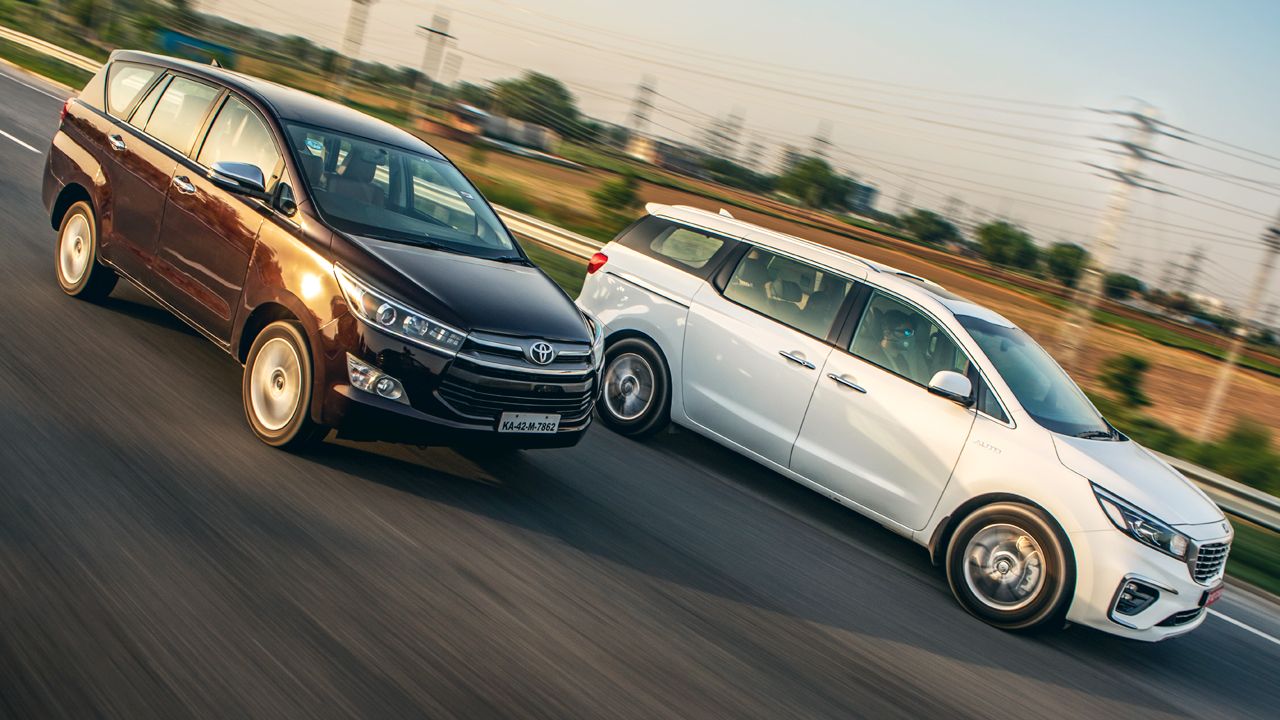
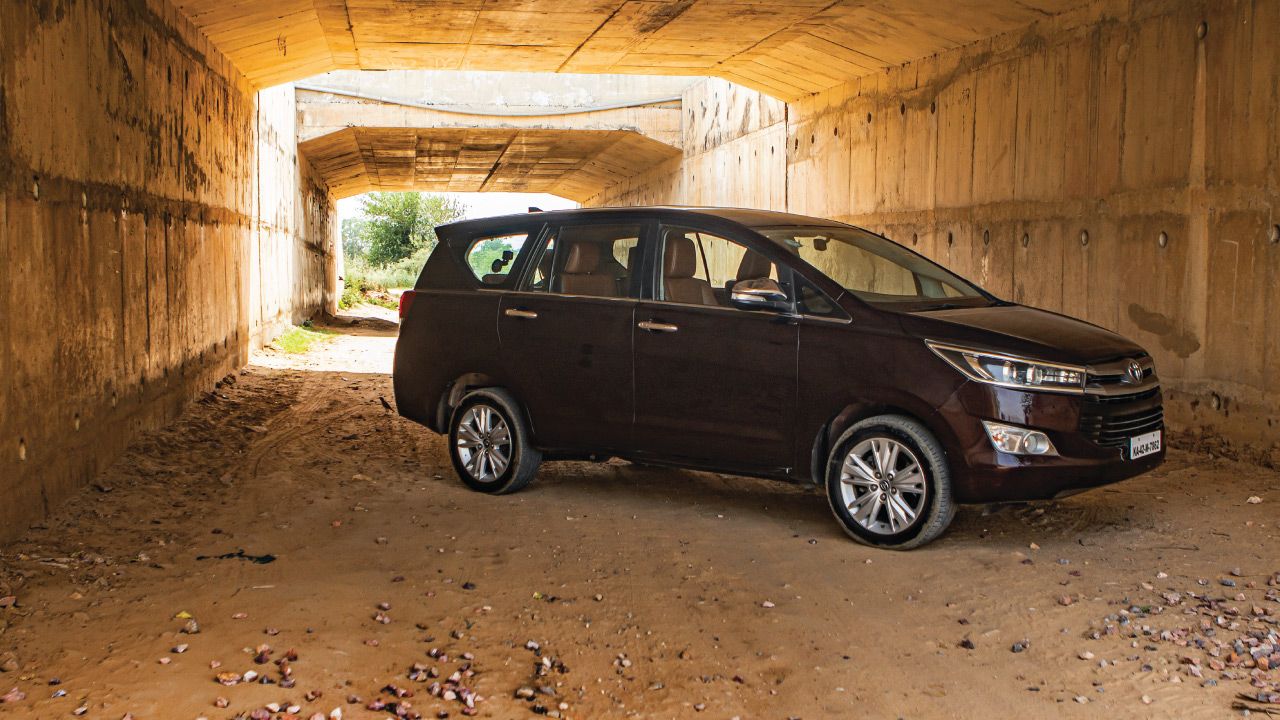
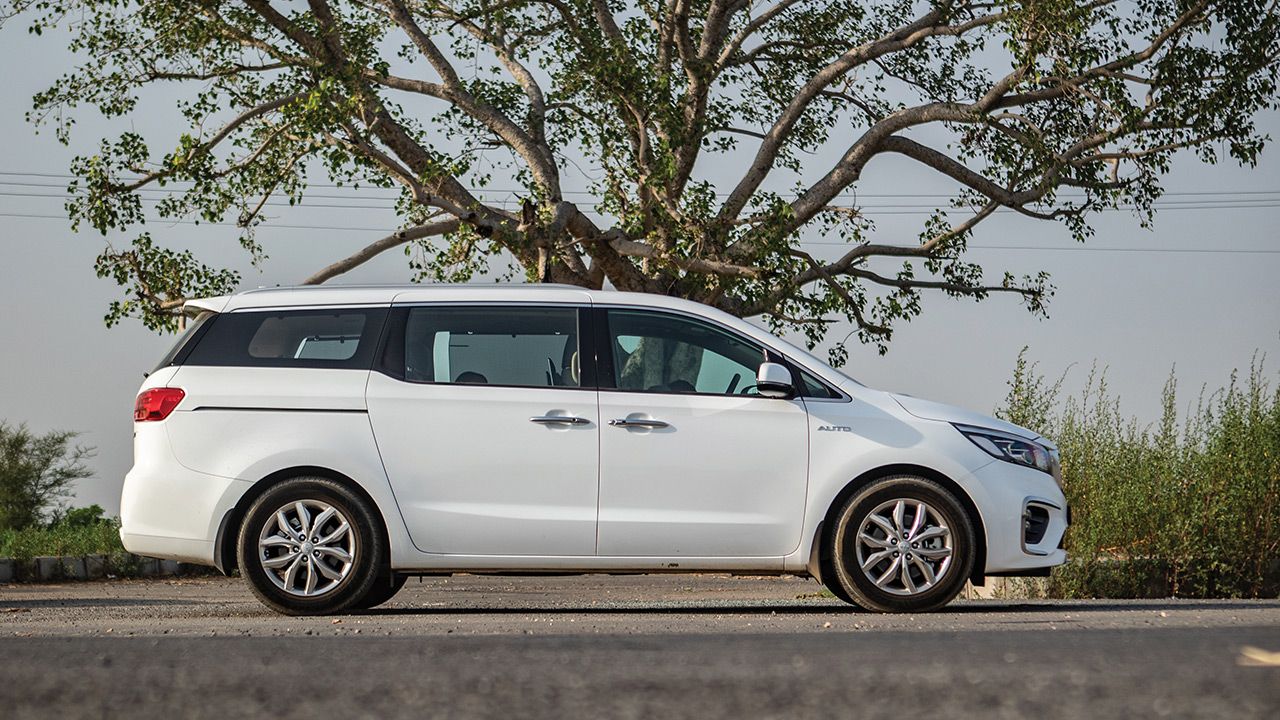
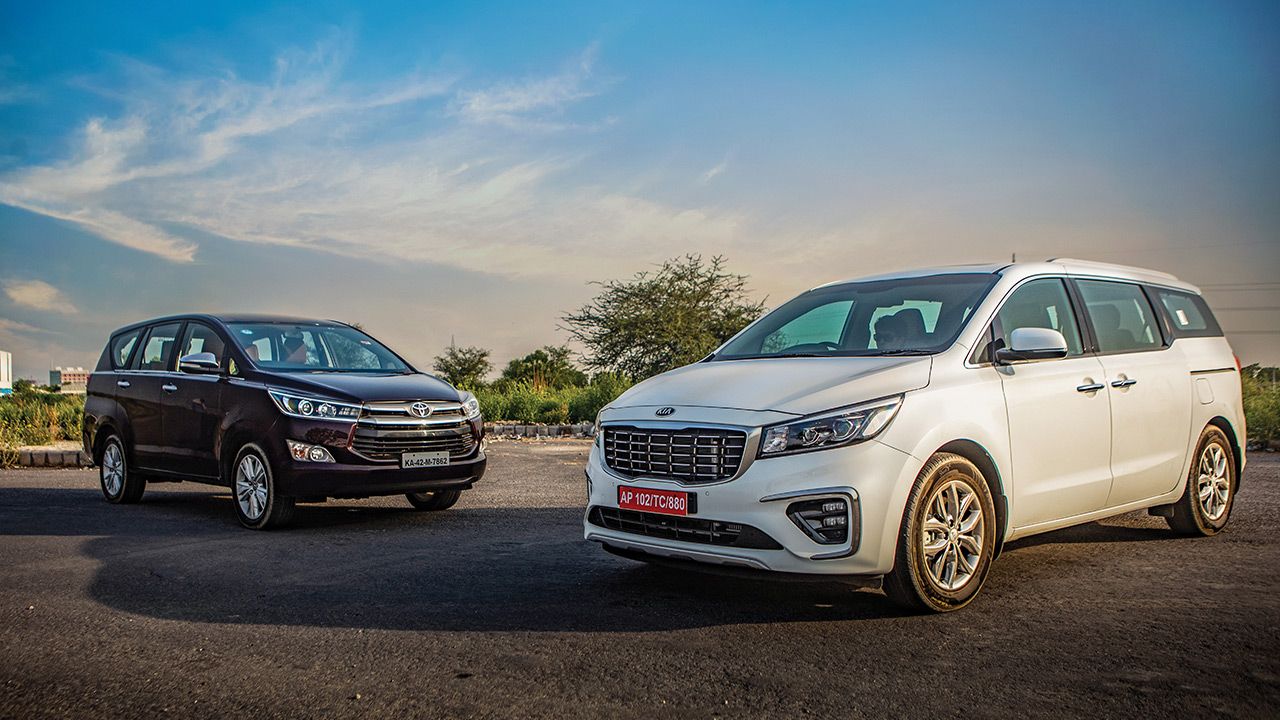
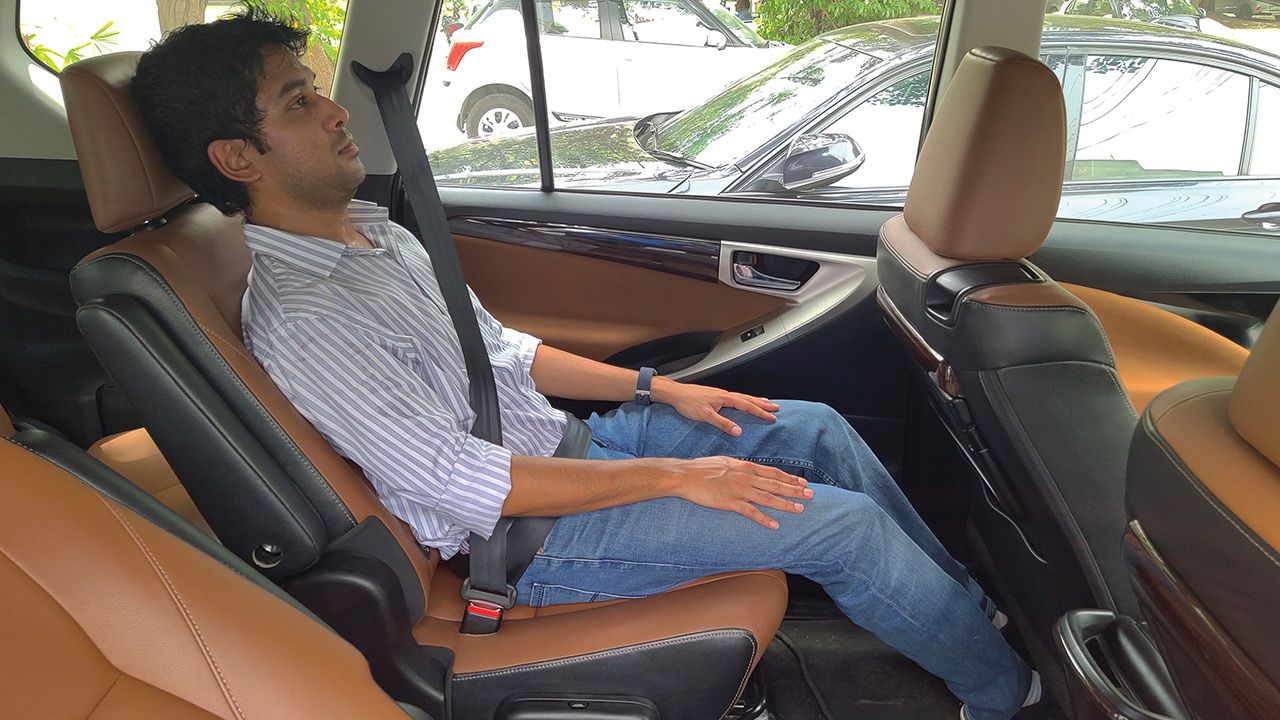

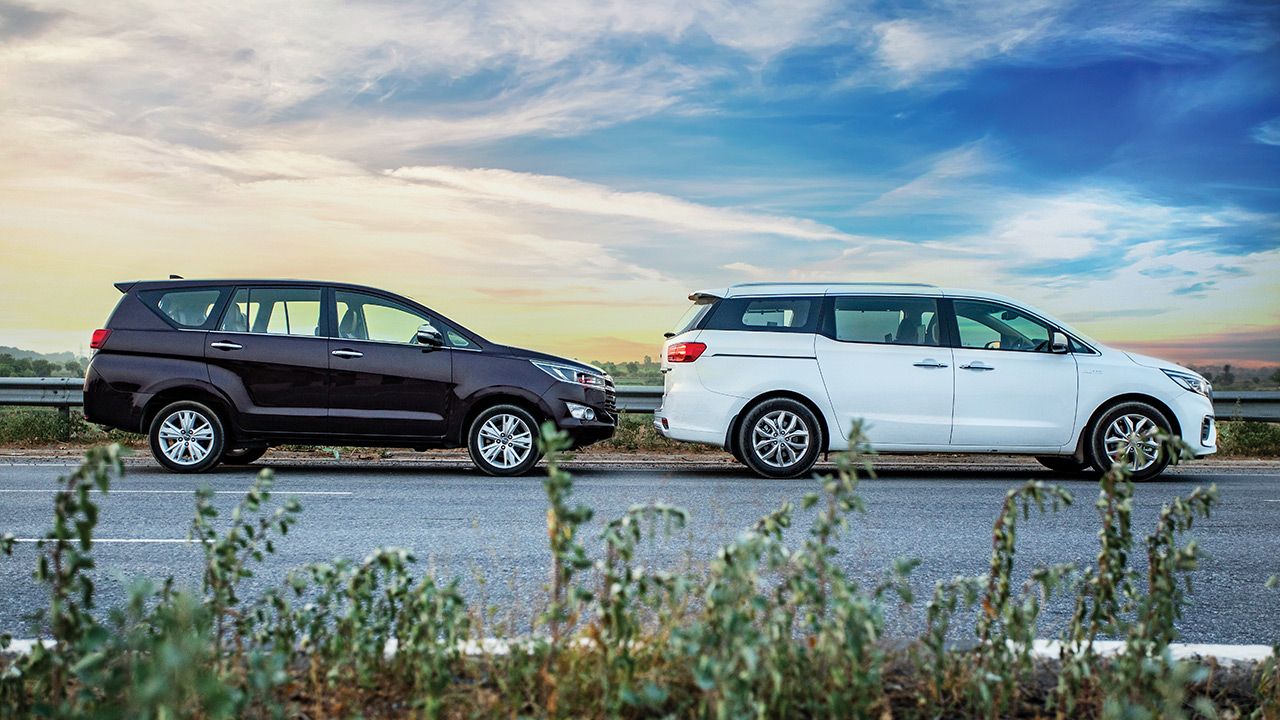
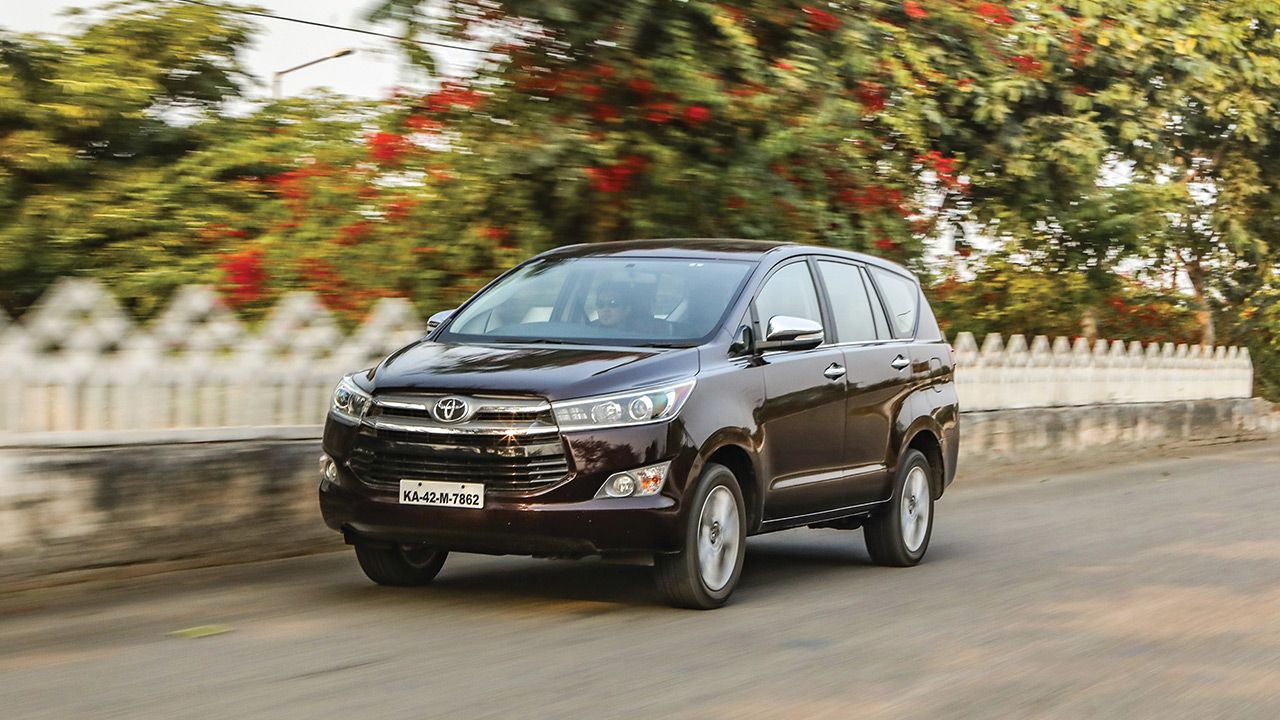
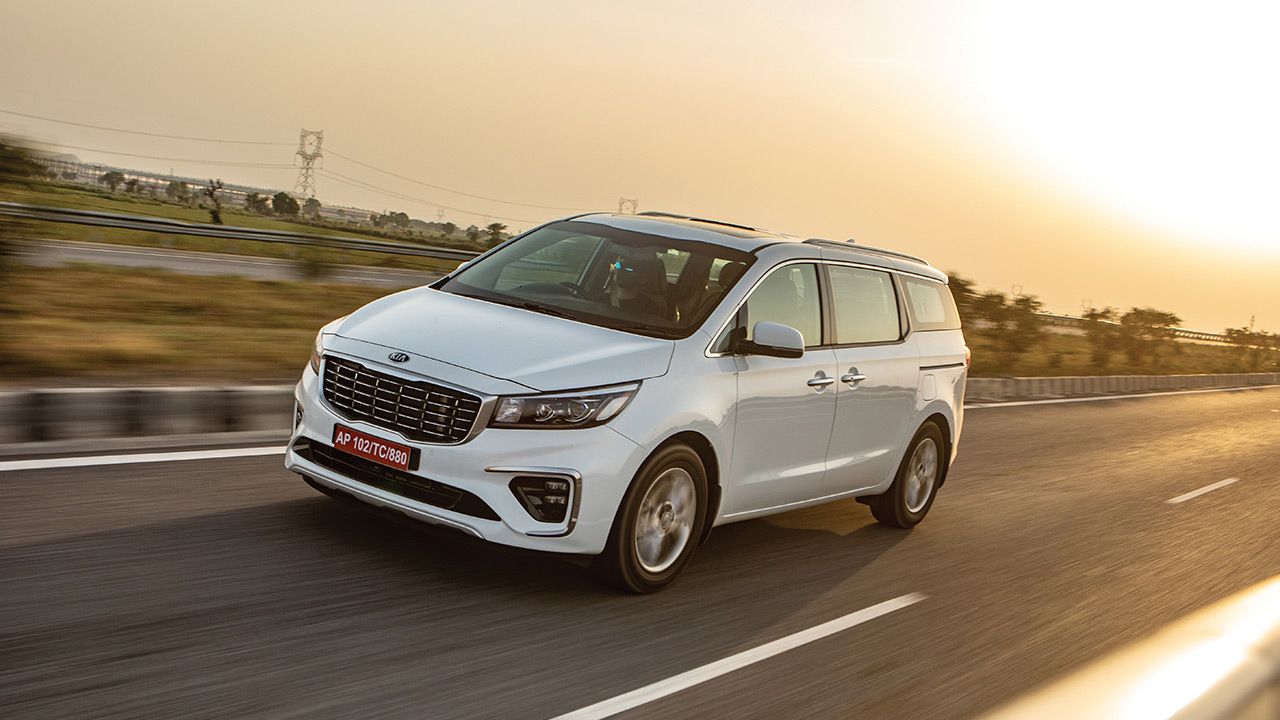
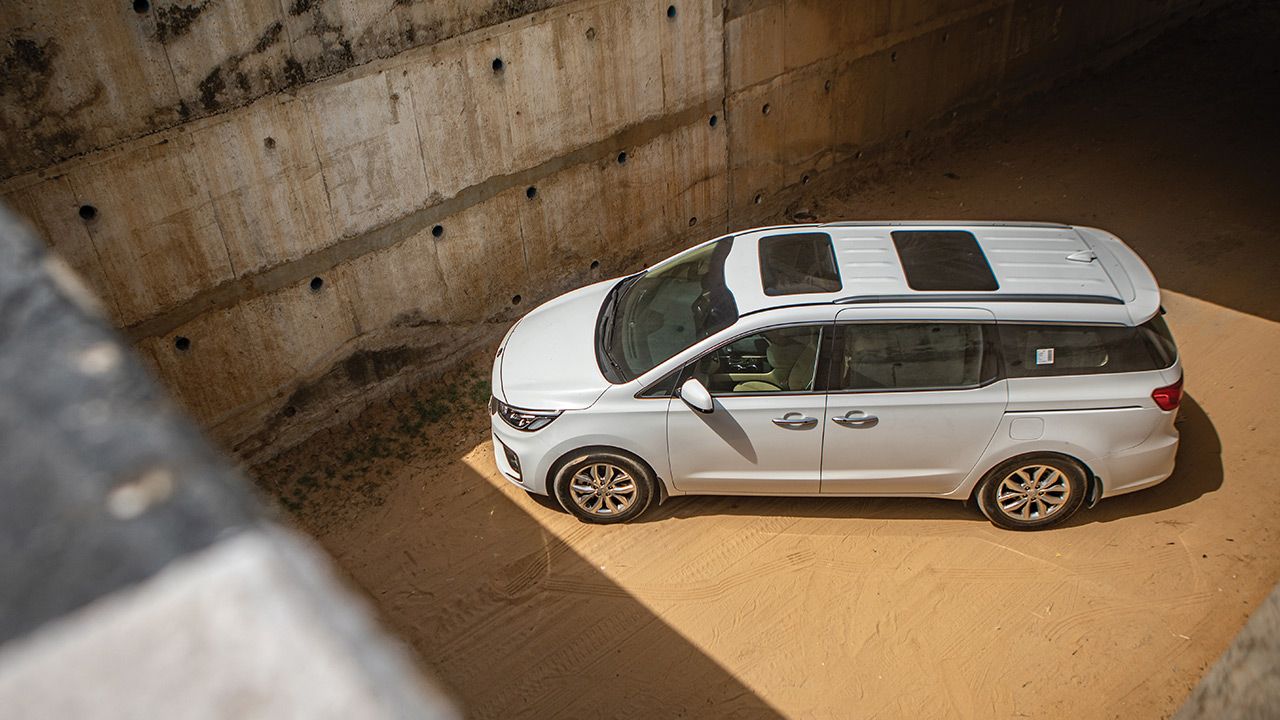




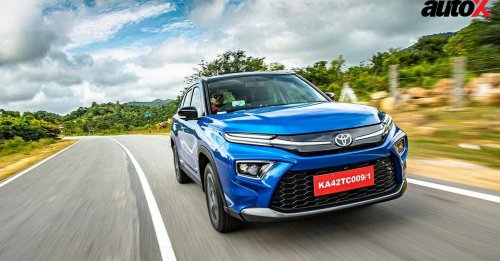















Write your Comment